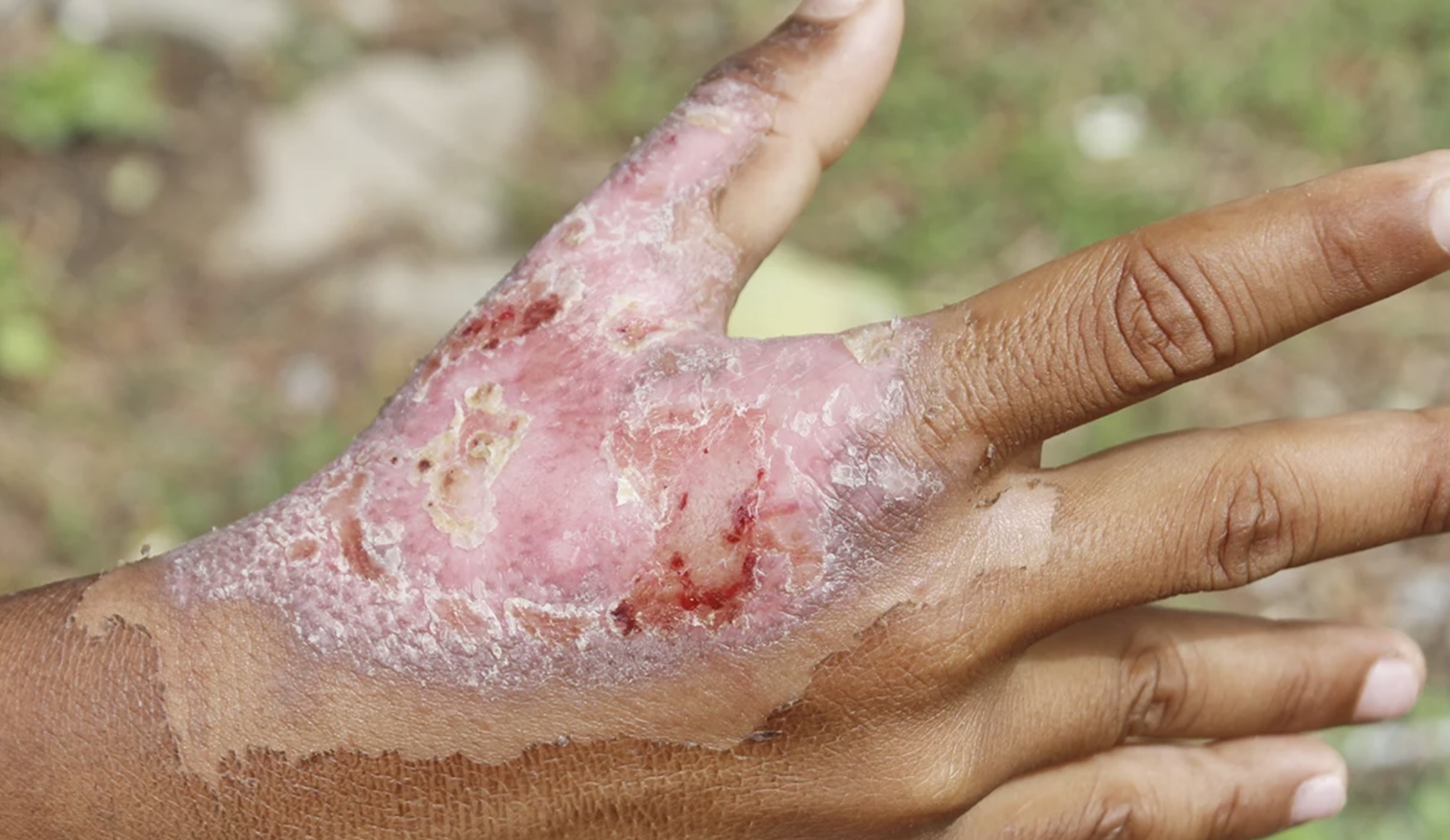Burns: First Aid & Treatment
What is the proper first aid for burns?
Here are the proper first aid steps for treating burns:
- Cool the burn with cool (not cold) water:
- Run cool water over the burned area or soak it in a cool water bath for 3-5 minutes. This helps stop the burning process.
- Don’t use ice, ice water, or any frozen material as this can further damage the tissues.
- Remove tight items/clothing from the burned area:
- Act quickly to remove any clothing, jewelry, belts, or constrictive items before swelling starts. But don’t remove anything stuck to the burn.
- Cover the burn with a sterile gauze bandage or clean cloth:
- Don’t use fluffy cotton which can stick to the burn. Cover the burn loosely to protect it.
- For facial burns, use a sterile cloth or cling wrap.
- Take pain medication if needed:
- Over-the-counter medications like ibuprofen or acetaminophen can help relieve pain.
- Seek medical treatment:
- See a doctor for burns that appear charred or have thick reddened skin, cause pain, or are larger than 3 inches across.
- All chemical and electrical burns require medical care.
- Don’t pop blisters:
- Blisters help prevent infection. Leave them intact.
- Elevate burned limbs if possible to reduce swelling.
- Check tetanus immunization status if the burn is severe.
Proper first aid can help prevent further burning, reduce pain and swelling, and prevent infection until the burn can be properly dressed and treated.
When should I seek medical treatment for burns?
You should seek medical treatment from your healthcare provider for burns in the following situations:
- If the burn is severe – meaning it involves the layers of skin beneath the top layer (partial or full thickness burns). Signs of a severe burn include charred skin, thick reddened skin, and blisters or areas of exposed flesh.
- If the burn is very large – any burn bigger than 3 inches (about the size of your hand) in diameter should receive medical evaluation.
- If the burn is on the face, hands, feet, genitals or a major joint – these areas require special treatment.
- If the burn was caused by chemicals, explosions or electricity – these types of burns require immediate medical care.
- If there is excessive pain or the pain seems out of proportion to the size of the burn.
- If the burn starts to show signs of infection – such as oozing, increased pain, redness spreading, fever.
- For any burns in infants, young children or elderly adults.
- For burns in people with pre-existing medical conditions like heart disease or diabetes.
Even for minor burns, it’s a good idea to have them evaluated, as proper dressing and treatment can prevent complications and scarring. Make sure to seek emergency care for any burn that seems to be severe or involves the face, hands, feet or genitals. Quick treatment helps prevent further tissue damage.
What is the medical treatment for burns?
The medical treatment for burns depends on the severity and extent of the burn injury. Here are some common medical treatments:
Mild Burns (Superficial):
- Cooling with cool water
- Applying antibiotic ointments/creams
- Taking over-the-counter pain medication
- Keeping the area clean and covered with sterile dressings
Moderate/Severe Burns (Partial or Full Thickness):
- IV fluids to prevent dehydration and shock
- Cleaning and debriding (removing dead tissue)
- Applying antimicrobial creams or dressings
- Providing tetanus shots if needed
- Administering pain medication, sedatives, antibiotics
- Prescribing special burn ointments/creams
- Surgical skin grafting if extensive injury
Severe/Critical Burns:
- Admission to a specialized burn unit
- Monitoring of breathing and organ function
- Insertion of a catheter to monitor fluid status
- Tube feeding if unable to eat/drink
- Treatment to prevent or control shock
- Dressing changes and further debridement
- Eventual skin grafting surgeries
- Rehabilitation and wound care management
Other potential treatments include:
- IV antibiotics for infection prevention/control
- Hyperbaric oxygen therapy for deep burns
- Physical/occupational therapy
- Scar management with pressure garments, massage, etc.
- Psychological counseling
The goal is to prevent infection, preserve maximal skin function, ensure adequate fluid/nutrition, minimize scarring, and optimize healing and recovery.




